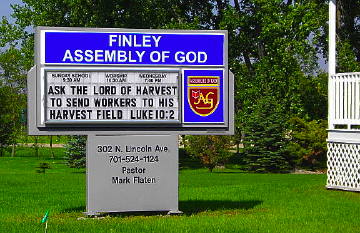As a Reed College student in my freshman humanities class, I read
St. Augustine's Confessions, often considered to be the first autobiography in the Western world.
Augustine did more to shape institutional Christianity in the West (Roman Catholics, Protestants) than anyone except the apostle Paul. The eastern Orthodox churches were not so impressed by him.
I re-read
The Confessions when I was working on
The Encyclopedia of Heresy and Heretics, because of Augustine's former involvement with the
followers of Mani.
Being older and a little wiser--and also Pagan--I was somewhat less impressed by how piously he
ditches his Pagan girlfriend, the mother of his son, because his Christian mother (
St. Monica) does not like her and wants him to marry a Christian virgin. Monica herself advised Christian women to be sweet to husbands who beat them. You can find her spiritual heirs on the shelves of Christian bookstores today.
Augustine's big book, however, is
The City of God, which established him as a theologian. I never had read it, but I have decided to attempt at least the first half, which is his attack on Roman polytheism.
He wrote it around 410, roughly 50 years after Julian,
the last Pagan emperor, and a century after the imperial house (except Julian) became officially Christian. Paganism lingered, more in the Western empire than in the East, I think, but no longer enjoyed such government subsidies as formerly.
Its historical context was
the Visigoths' attack on Rome. The Visigoths, who had lived in present-day Bulgaria, were tribes allied to Rome, and the attack was part of an attempt by their leader,
Alaric, to become supreme Army commander--or maybe more--it was a complicated time of military-political contests for rulership. But the idea of barbarians breaking into Rome was a big shock for the empire, and some people claimed it happened because Rome had abandoned the old gods.
Here is were Augustine seems to "spin" his story, however, in a manner worthy of a Sunday-morning political TV talk show. He did teach rhetoric, after all.
Right off, in Book I, he makes much how the "the barbarians" spared residents of Rome who fled to Christian churches, even Pagans. He writes, "For of those who you see insolently and shamelessly insulting the servants of Christ, there are numbers who would not have escaped that destruction and slaughter had they not pretended that they themselves were Christ's servants."
He was not an eyewitness, but let's assume he was right. But what he does not mention is that "the barbarians" themselves--at least some of them, including Alaric--
were Christians.
The only problem is that from Augustine's point of view, they were the wrong flavor of Christians. They were
Arian Christians, who believed Jesus was created by God the Father instead of having existed eternally as part of the Trinity. Arianism was big among the Germanic tribes, possibly because it made Jesus more of a "culture hero."
The controversy was long and bitter, so Augustine prefers to write about "barbarians" instead of admitting that they were largely Christian barbarians looting a Christian/Pagan city.
That's Book (in other words, "chapter") One. I might have more to say about his take on polytheism later.
Labels: Christianity, Paganism, polytheism, Rome


 On the Kamchatka Peninsula in Russia's Far East (across from Alaska), indigenous people are engaged in
On the Kamchatka Peninsula in Russia's Far East (across from Alaska), indigenous people are engaged in  I have not yet seen it, but English scholar Jo Pearson has a new book,
I have not yet seen it, but English scholar Jo Pearson has a new book, 


